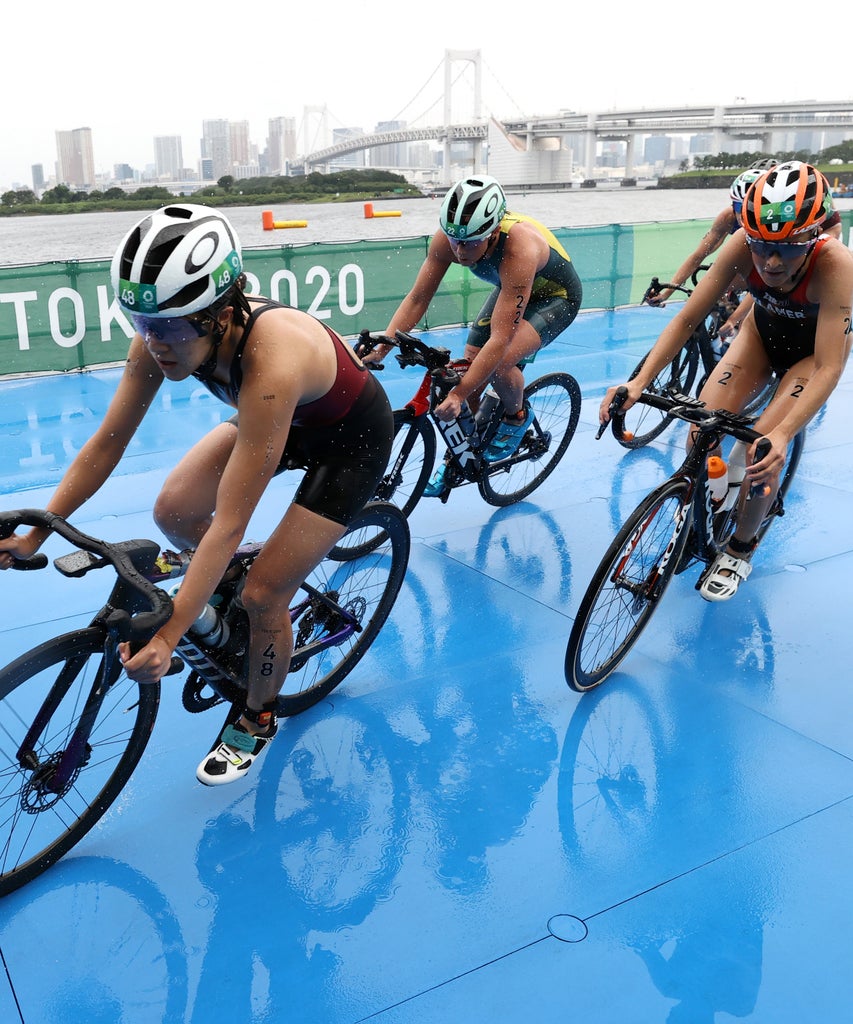
When a normal person watches the Olympics, they may spend their time being in awe of Simone Biles’ athleticism or wondering what sport, if any, they could realistically compete in for the gold (handball, maybe) or even about what really goes on in the Olympic Village. But for Refinery29’s wellness team, there’s only one question that needs to be asked: How do triathletes not get yeast infections?
Let us explain. A triathlon consists of three events: a swim, a cycle, and a run. Swimming is the first leg of the race. So are triathletes spending the next couple of hours biking, then running in a damp swimsuit — aka, a ripe breeding ground for yeast infections? Although not the lone culprit in causing a yeast infection, moist bathing suit bottoms can definitely be a contributing factor, and if these triathletes are practicing and competing in these conditions, they must have some experience with overgrown bacteria. Right?
Maybe not. Many triathlons hold the swimming leg of the race in bays, rivers, lakes, and oceans rather than swimming pools, and competing in these bodies of water may actually be less harmful to vaginal health than swimming in a pool. That’s because of the chemicals added to pool water: Just as chlorine kills the bad bacteria in the pool, it can also kill the good bacteria in the vagina, Gil Weiss, MD, OB/GYN, partner at Association for Women’s Healthcare in Illinois, previously told Refinery29. “Chlorine can neutralize the healthy vaginal pH, making it more basic and disrupting the delicate balance between yeast and bacteria, therefore contributing to a yeast infection,” he said. “Swimming in a lake or the ocean poses less of a risk for infections as no chlorine and continual movement of water tends to have less impact on vaginal healthy.”
That doesn’t mean that every dip in a pool will lead to a yeast infection. But following a swim by sitting in bottoms that are damp with pool water for hours can be an issue, since yeast thrive in moist, warm environments. That said, Amy Kilpin, a triathlete based in the UK, tells Refinery29 that the tri suits the athletes compete in are made of technical fabric with “either gel or aerated foam padding” that may help alleviate the risk of infections. Alyssa Godesky, a professional triathlete based in New Hampshire, adds that much of the workout gear athletes wear is antimicrobial and sweat-wicking, further reducing the risk of a yeast infection. Plus, athletes actually don’t spend all that much time in their damp suits. Megan Foley, a professional triathlete based in Utah, says that during training most athletes will change before hopping on their bikes. During the race they might not change — but in the Olympics, that only amounts to a couple of hours in wet bottoms.
That’s not to say that triathletes deal with no discomfort below the belt, says Foley. “For those of us racing Olympic distance triathlons, our suits usually don’t have chamois, a pad in the crotch to make sitting on the bike more comfortable,” she tells Refinery29. “The main problem we deal with is saddle sores, and those are a heavily talked about topic among training partners.”
Even though yeast infections don’t really seem like that big a deal in the triathlon world, Godesky still gives some sound advice: “For the most part, I think the key is that you get out of the bathing suit when your swim is done… [and] to just not sit around in sweaty gear for a long time after a workout.” That’s a good rule of thumb for everyone, athletes and non-athletes alike.
Like what you see? How about some more R29 goodness, right here?
Which Olympic Sport Could You, A Normal Person, Do
Olympic Skateboarder Brighton Zeuner's Power Diary
Viral Skateboarder Rayssa Leal Wins Olympic Medal
from Refinery29 https://ift.tt/2TVNR5k
via IFTTT

